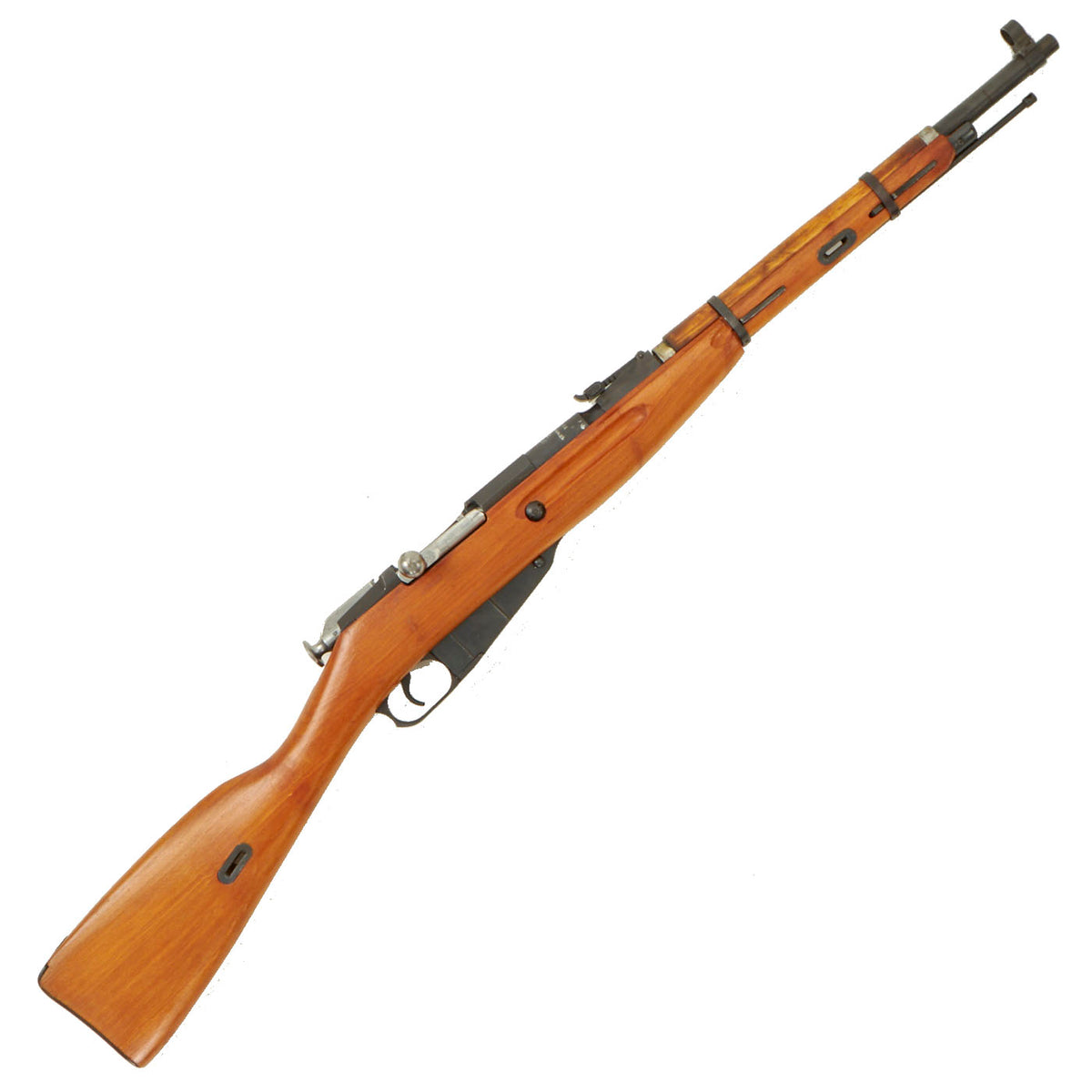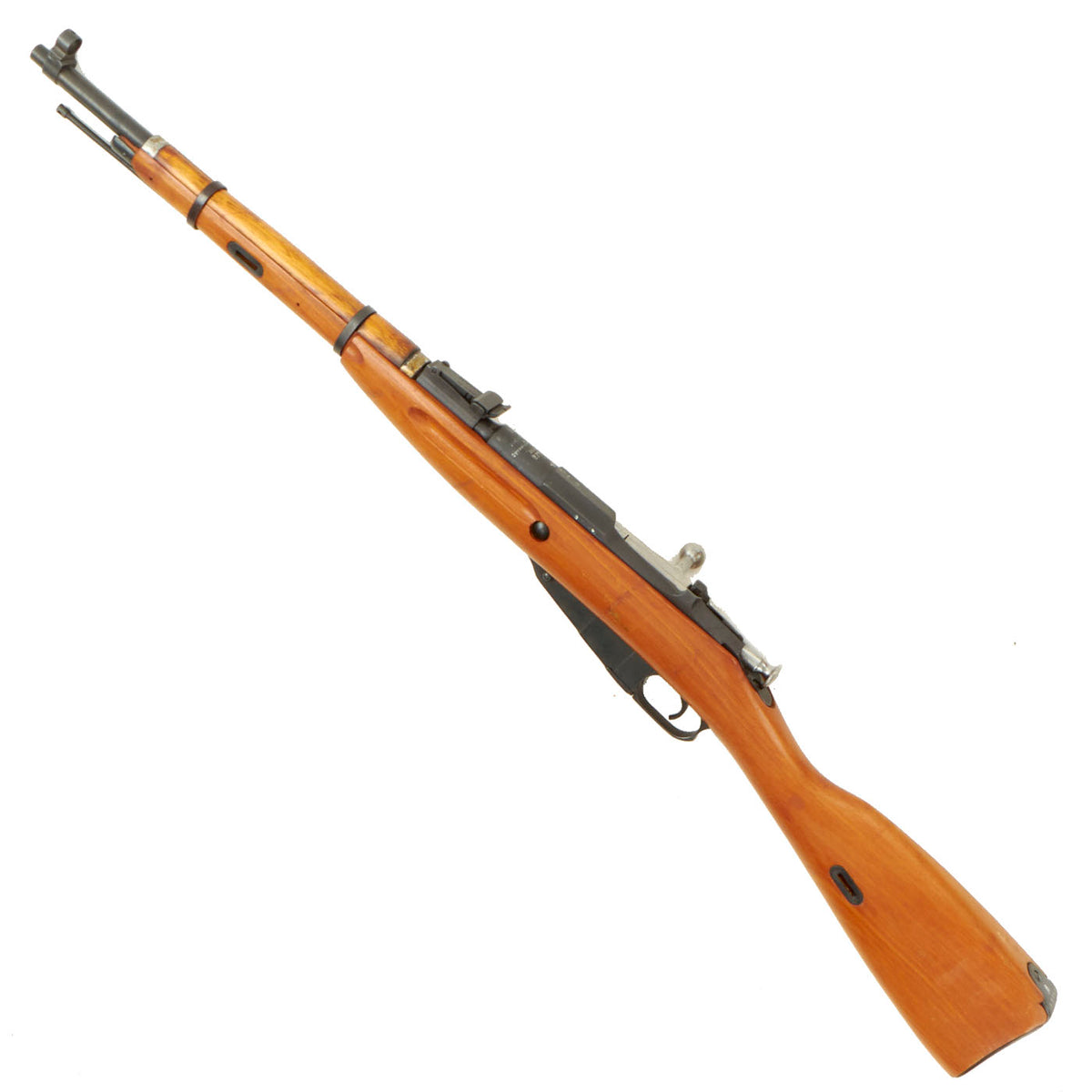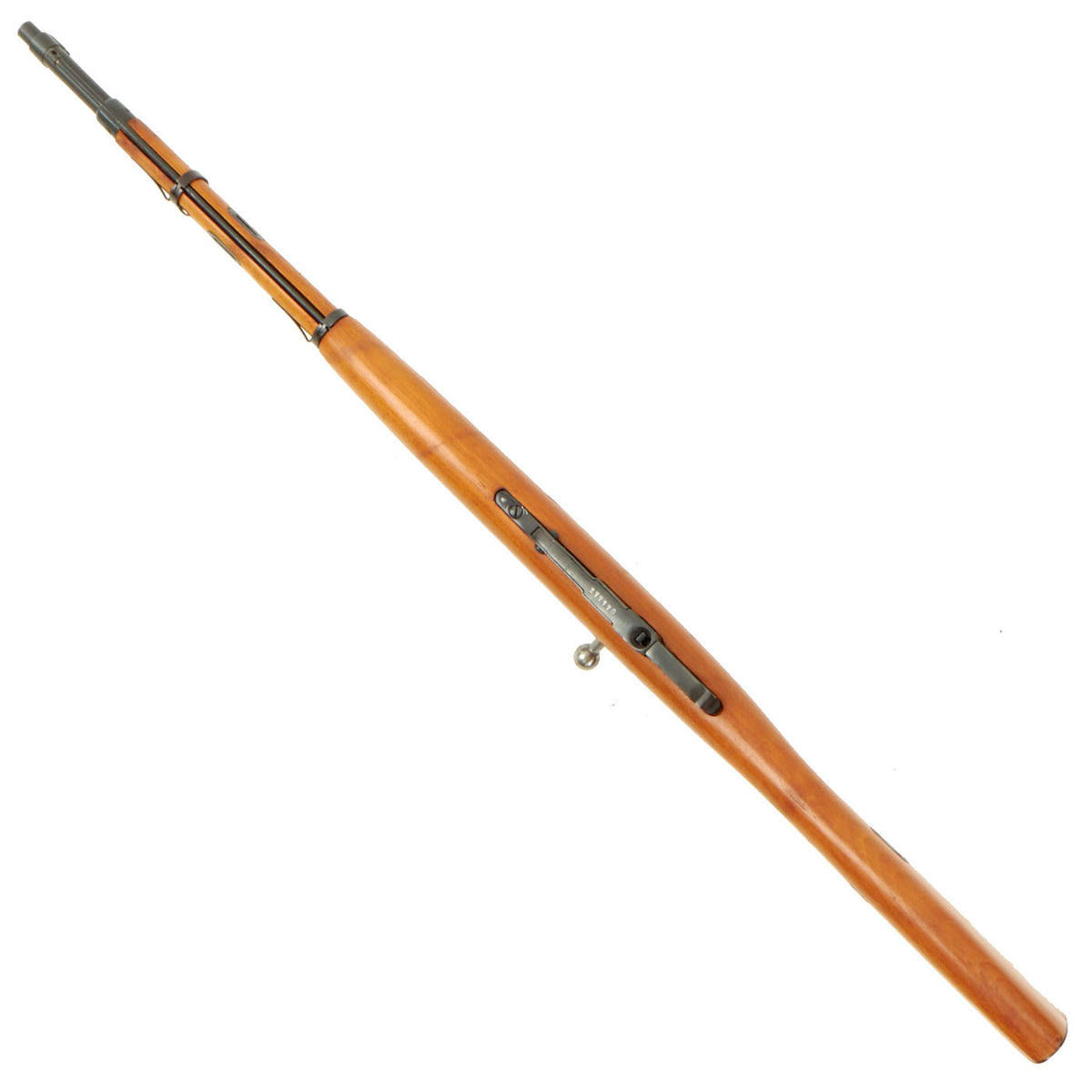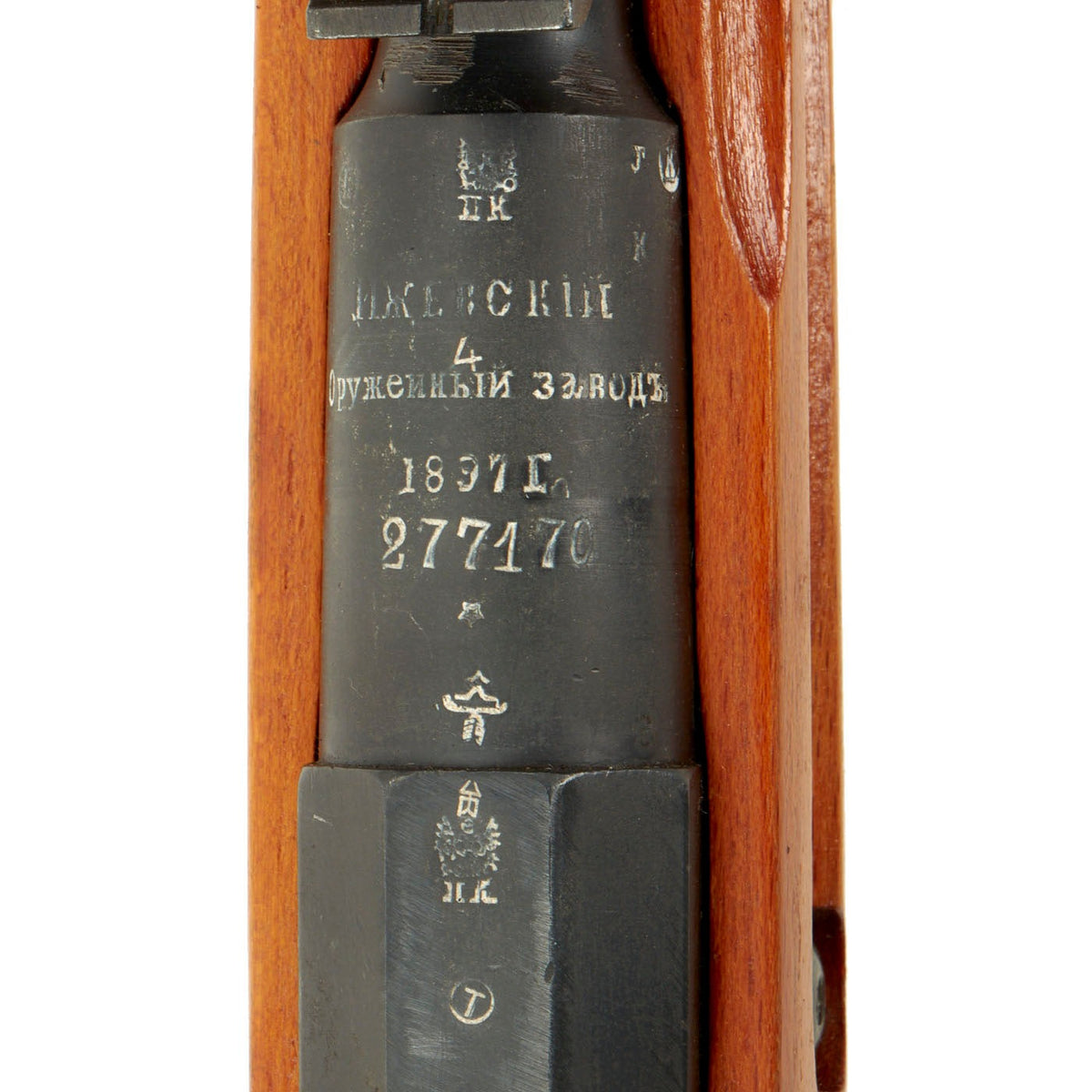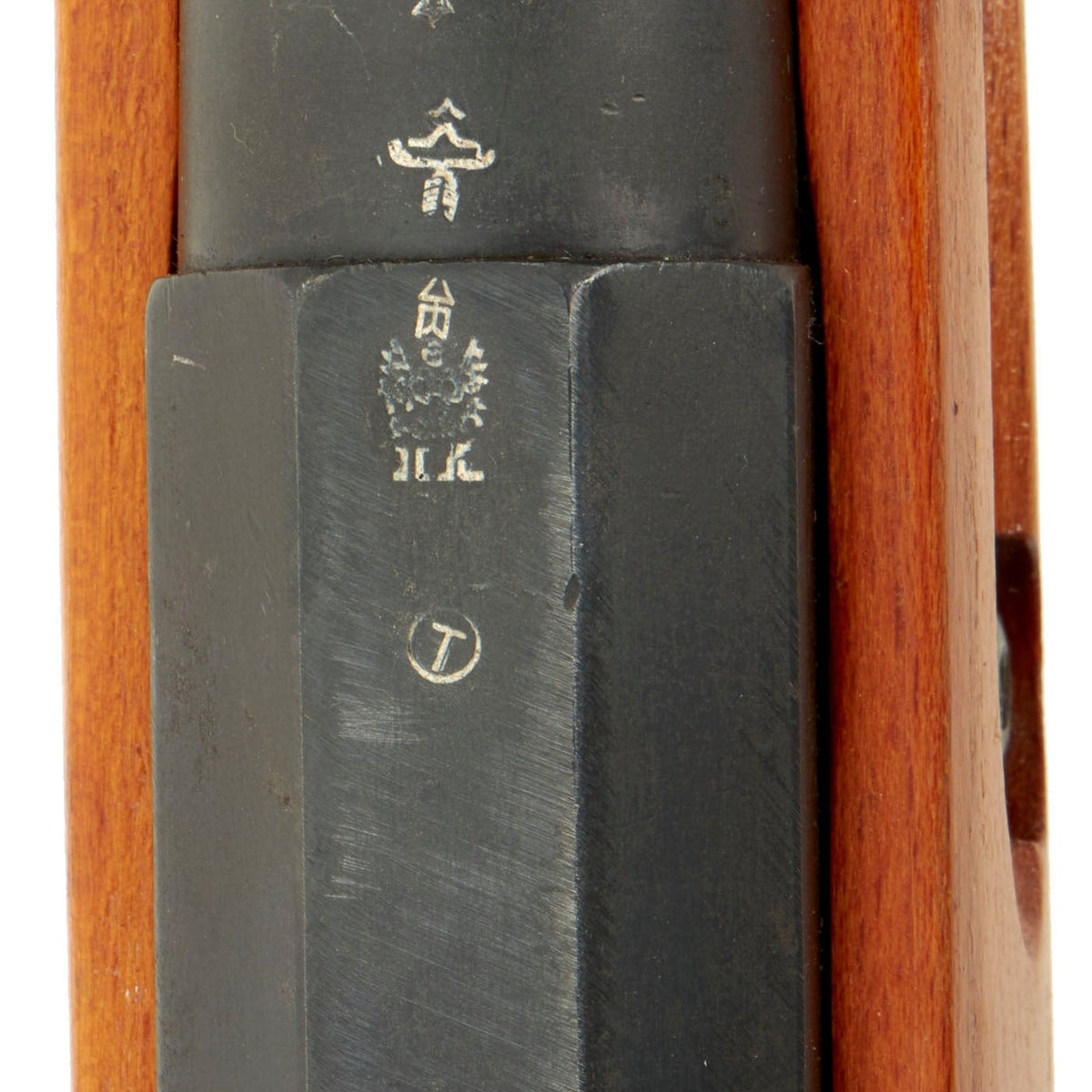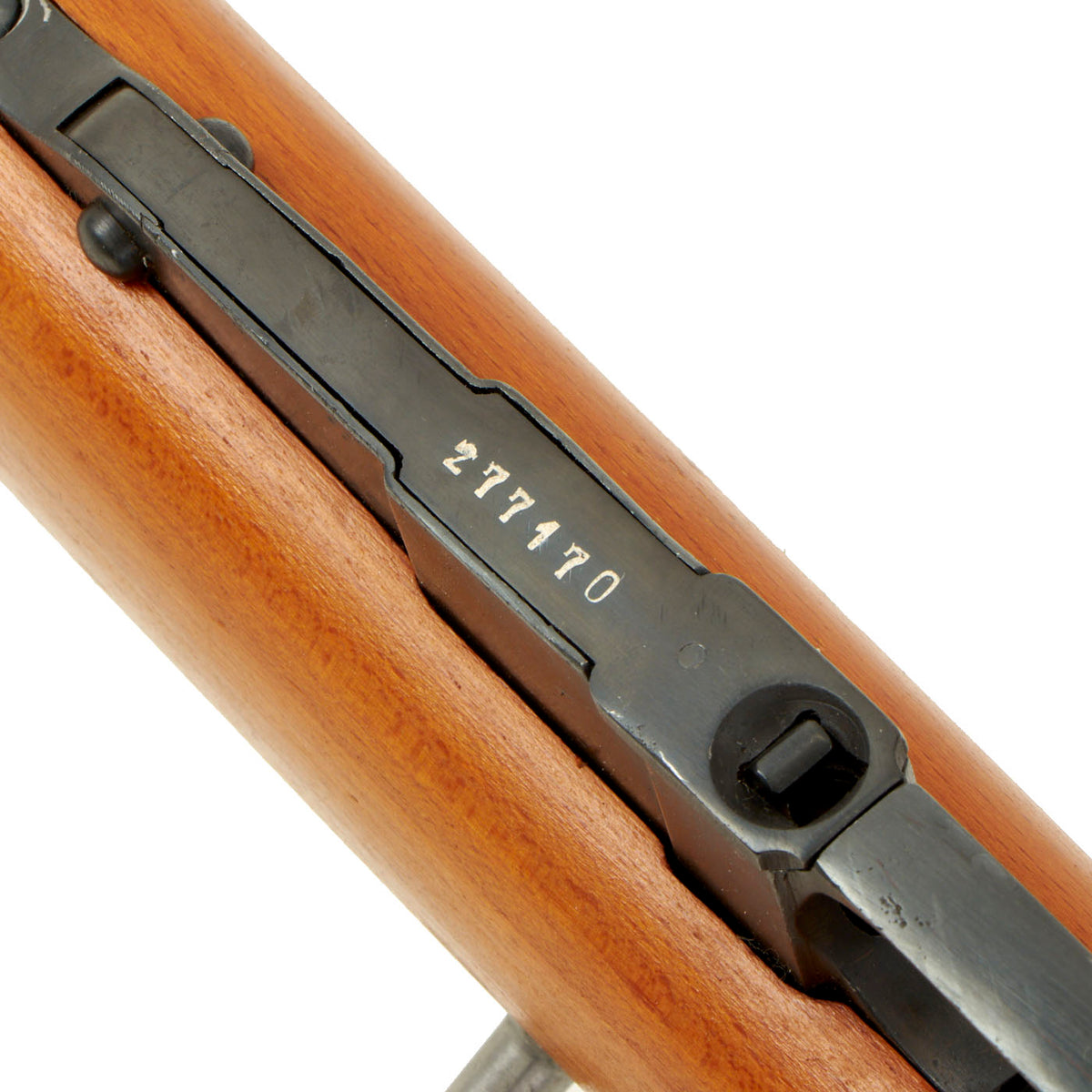Original Antique Soviet Russian Produced Czechoslovakian Mosin-Nagant VZ91/38 Carbine Serial 277170 – dated 1897 Original Items
$ 1.995,00 $ 498,75
Original Item: Only One Available. These are quite rare, and this is most likely the first example that we have ever had! This carbine began its live as a real pre-1898 Antique Russian Mosin-Nagant M1891 Full Length Rifle, more officially referred to as the “Three Line Infantry Rifle, Model of 1891.” This was the standard rifle in use during WWI, and it’s very possible that this weapon saw service in the conflict. After the Russian withdrawal from WWI and subsequent revolution, the rifle was most likely put into storage, as there had been improvements to the design.
It stayed there until after WWII, when it was reconditioned and converted to a carbine for supply to Czechoslovakia after the Soviet-backed 1948 coup d’état put the Communist party firmly in charge of the country. The USSR supplied arms and other materiel to all of their allied Warsaw pact countries, and in this case chose to remodel Imperial Russian era Mosin-Nagant rifles into Czech VZ91/38 Carbines.
There had been some of these created in Czechoslovakia itself from obsolete Mosin-Nagant M1891 rifles in the late 30s prior to the German invasion and occupation, and these most likely inspired the post war examples supplied by the USSR. They are very similar to the Soviet Model 1944 Carbine, and even have the cutout in the right side of the stock where the folding bayonet on the M1944 would be stored. There is no evidence that VZ91/38 carbines ever had this folding bayonet, so most likely the stocks were unused M1944 stocks.
This example is in beautiful condition, and is pretty much a textbook example. It still bears the original Imperial Russian “Double Headed Eagle” markings, as well as the ordnance markings on the end of the barrel and receiver:
(Imperial Eagle)
Л К
ИЖЕВСКІЙ
Оружейньійзаводъ.
1897г.
277170
(Bow & Arrow)
These indicates original manufacture in 1897 at Izhevsk arsenal, a major producer of Mosin-Nagant rifles and carbines. The factory itself was founded in 1807 at the request of the Czar, and continues to manufacturer small arms do this day. Other parts of the rifle are also marked with the Bow and Arrow proof of Izhevsk, Czarist markings which were discontinued following the Russian revolution and subsequent civil war. After this, the marking changed to an Arrow in a Triangle, which is seen on the butt plate. This was probably from when it was converted to a carbine.
Condition of the rifle is excellent, and it looks to have seen little to no use after having been converted for use by Czechoslovakia. The stock has a great color and finish, with just light handling marks. The metalwork still has the heavy blued finish applied at arsenal, while the bolt is the correct bright steel. The bore shows clear lands and grooves, with a mostly bright finish. The lands are slightly rounded, and there is a bit of darkness in the grooves. The muzzle has also been counter-bored in about 25mm, as commonly seen on these carbines and other surplus Mosin-Nagant firearms.
A wonderful piece of Russian and European Firearms history! Ready do display.
Specifications-
Year of Manufacture: 1897
Caliber: 7.62×54mmR Russian
Cartridge Type: Centerfire Cartridge
Barrel Length: 20 1/2 Inches
Overall Length: 40 Inches
Action type: Bolt Action
Feed System: 5 Round Internal
The Russian “Mosin-Nagant” bolt-action rifle is arguably the most-produced rifle in history, with around 37 million being produced in various versions in several different countries. This number easily surpasses the Lee-Enfield, Mauser GEW98 and Mauser K98K in number produced. The reasons for this are multiple, including both the size of Russia and later USSR, as well as the long service life of this design, which is still in use today in some locations.
The history of what is known as the “Mosin-Nagant” rifle begins in the late 19th century in Russia, following the Russo-Ottoman war. During the course of the war, it became apparent that Russian troops needed a modern bolt-action rifle to compete with the rest of the world, so they started evaluations in 1889 on what would become the general issue rifle for infantry troops. Three designs were submitted, and at the time in Russia bullet diameter was measured in “line”s, where one line was 1/10 of an inch. This is what gave rise to the official name of the rifle, the “3-line rifle, Model 1891”, as it was in .30cal, or 7.62mm. The name “Mosin-Nagant” is in reality somewhat of a misnomer, as the design chosen was designed by Mosin, not Nagant. However due to legal issues with Nagant over certain design aspects of the rifle, his name was attached to the design as well, leading to the name used in most of the world, the “Mosin-Nagant Model 1891”. Three other models would subsequently be put into service prior to WWI: the M1891 Dragoon, the M1891 Cossack, and the M1907 Carbine.
Fast Shipping with Professional Packaging
Thanks to our longstanding association with UPS FedEx DHL, and other major international carriers, we are able to provide a range of shipping options. Our warehouse staff is expertly trained and will wrap your products according to our exact and precise specifications. Prior to shipping, your goods will be thoroughly examined and securely secured. We ship to thousands clients each day across multiple countries. This shows how we're dedicated to be the largest retailer on the internet. Warehouses and distribution centres can be located throughout Europe as well as the USA.
Note: Orders with more than one item will be assigned a processing date depending on the item.
Before shipping before shipping, we'll conduct a thorough inspection of the items you have ordered. Today, the majority of orders will be delivered within 48 hours. The delivery time will be between 3-7 days.
Returns
The stock is dynamic and we cannot completely manage it because multiple stakeholders are involved, including our factory and warehouse. So the actual stock may alter at any time. It's possible that you may not receive your order once the order has been made.
Our policy is valid for a period of 30 days. If you don't receive the product within 30 days, we are not able to issue a refund or an exchange.
You can only return an item if it is unused and in the same state as the day you received it. You must have the item in its original packaging.
Related products
Uncategorized
Armored Burgonet Helmet & Polearm from Scottish Castle Leith Hall Circa 1700 Original Items
Uncategorized
Uncategorized
Uncategorized
Australian WWII Owen MK1 Machine Carbine SMG Custom Fabricated Replica with Sling Original Items
Uncategorized
Uncategorized
Uncategorized
Uncategorized
Uncategorized
Angolan Rebel 1970s era 60mm Inert Display Mortar from Angolan Civil War Original Items
Uncategorized
Uncategorized
Uncategorized
Band of Brothers ORIGINAL GERMAN WWII Le. F.H. 18 10.5cm ARTILLERY PIECE Original Items
Uncategorized
Uncategorized
Armoured Fighting Vehicles of the World: AFVs of World War One (Hardcover Book) New Made Items
Uncategorized
Uncategorized
Uncategorized
